Reception
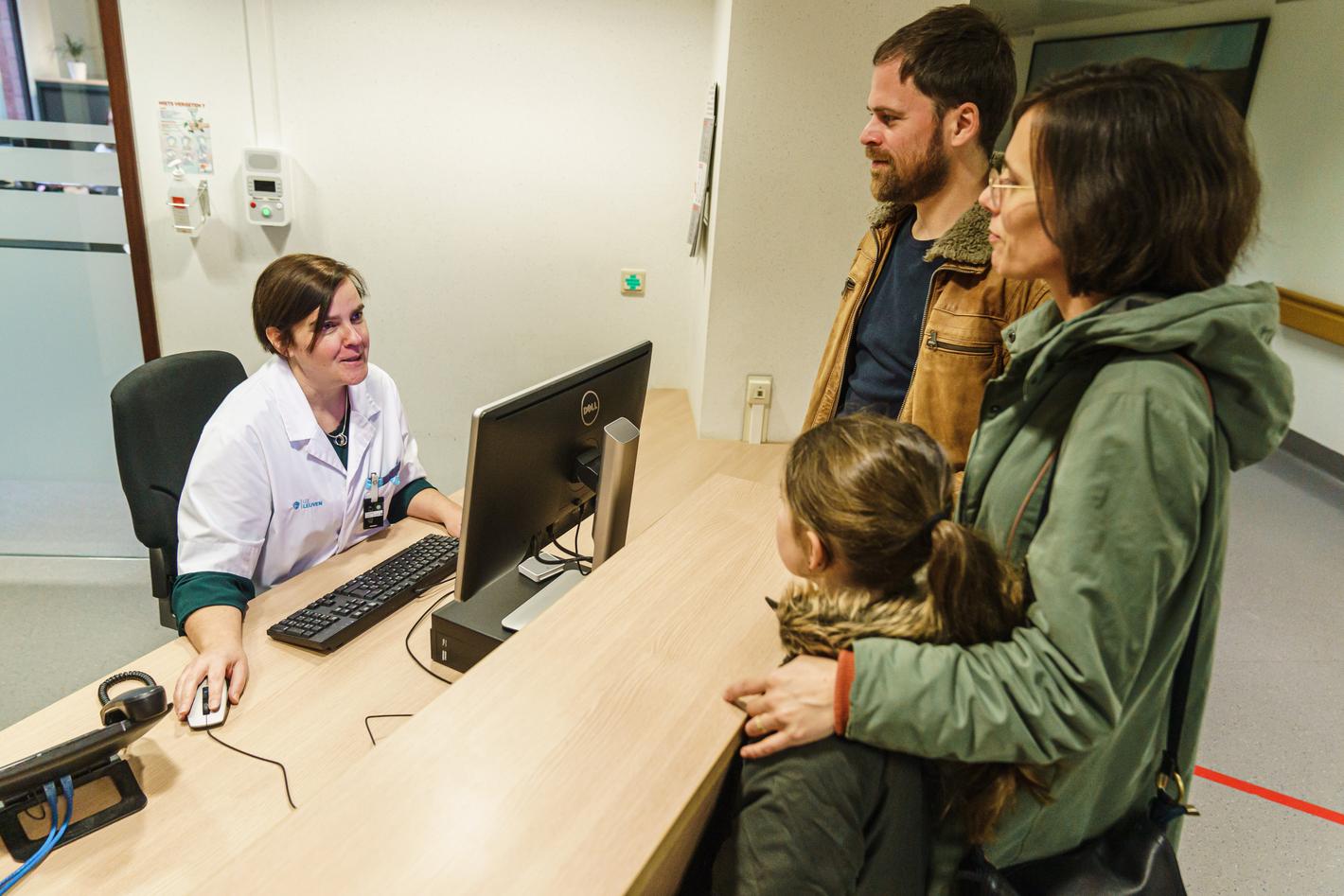
You will go to the reception desk together with your parents. Here you can wait for a while until the doctor comes to get you.
Team
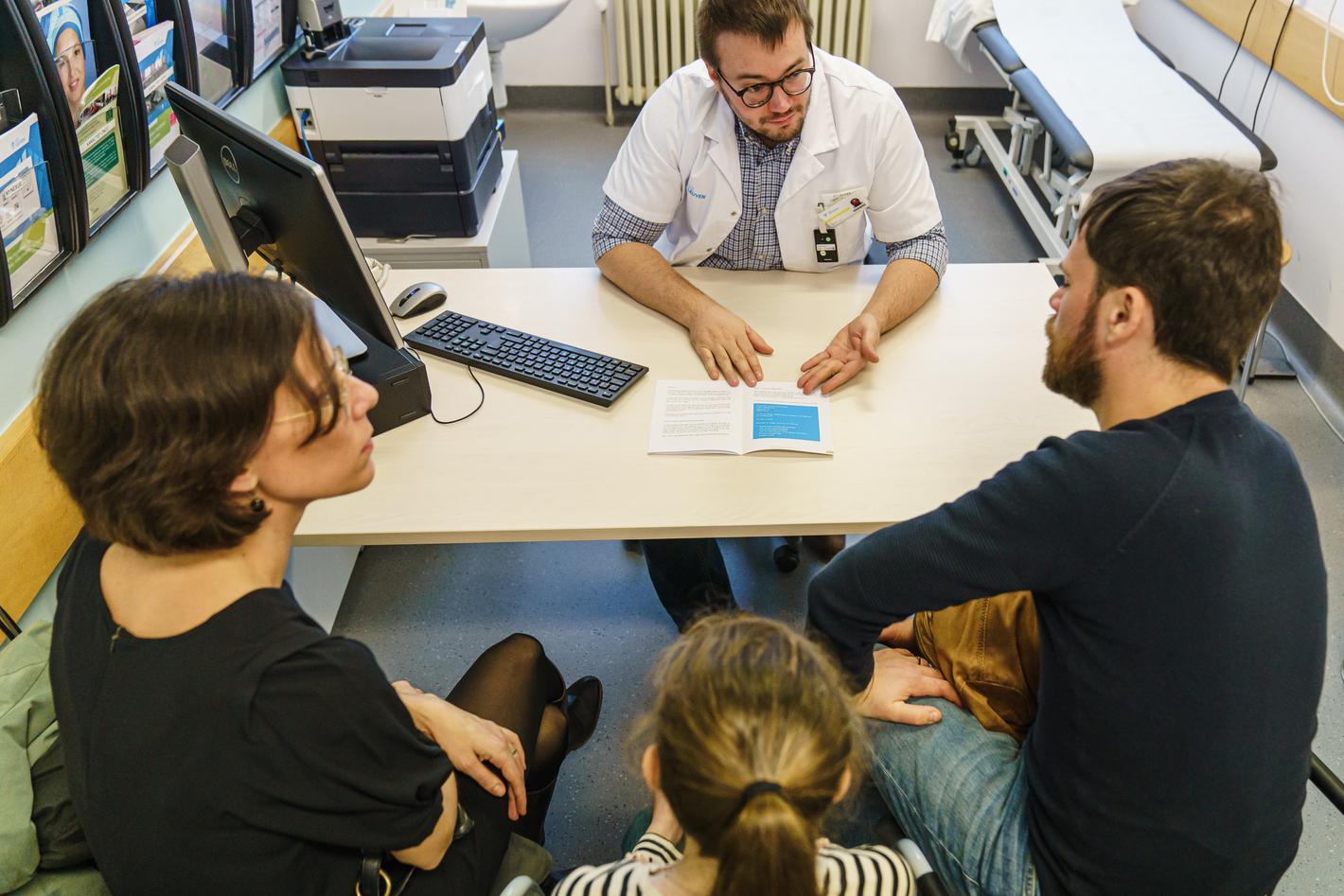
The radiotherapist-oncologist - the doctor who specialises in radiation treatments - will ask you some questions. Do you have any questions of your own? Feel free to ask them.
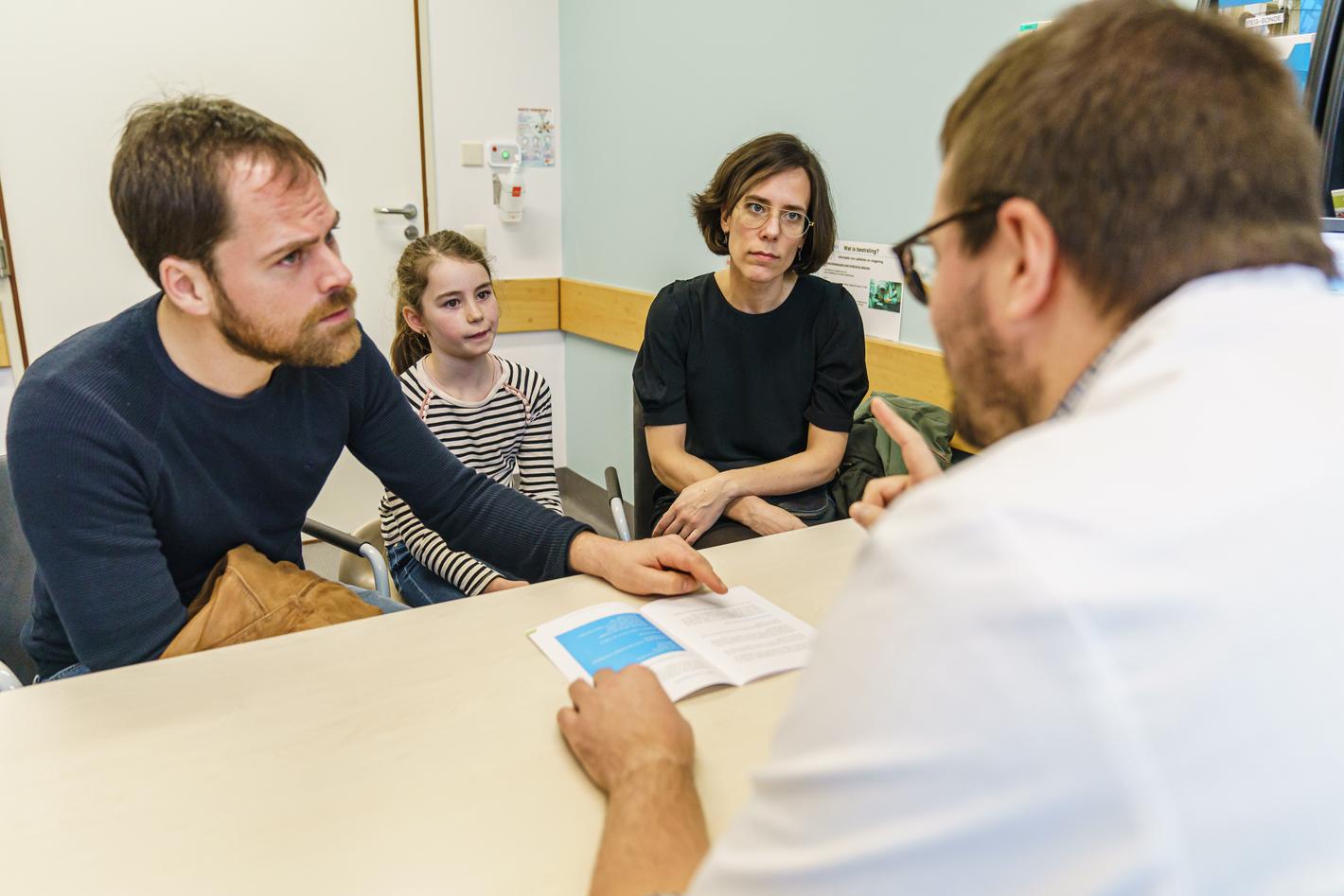
The doctor will also examine you. Afterwards he will tell you more about the treatment that is right for you.
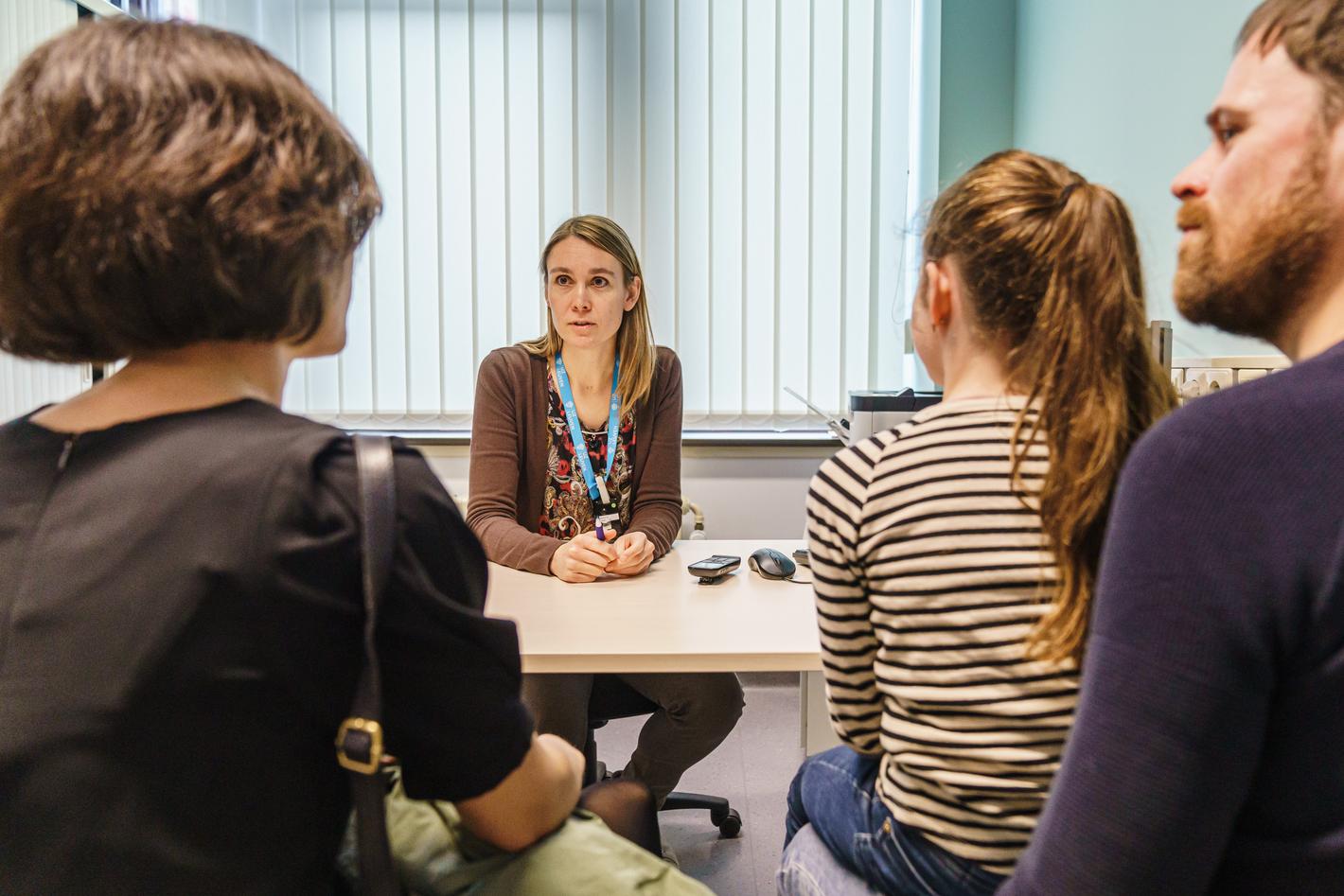
Aside from the radiotherapist-oncologist, a couple of other people will come in to meet you.
The social worker will further explain the different steps of the treatment and can help your parents with practical problems.
Via her you will also be introduced to Radio-Robbie and the Chain of Courage. The Chain of Courage is a source of support during therapy. For a particular treatment, examination or event, you will receive a bead for your necklace.
Care coordinator
The care coordinator helps you find your way around the hospital. She makes sure that all your questions are directed to the right people.
Paediatric oncologist
There is also a paediatric oncologist who will examine you. Ask as many questions as you like.
CT-simulation
Before treatment can start, we need to make a scan with a CT-simulator. On a CT-simulator you have to lie in the exact same position as on the radiotherapy machine. With the help of the images, the doctors can make a plan tailored to your treatment. This process is called the CT-simulation.
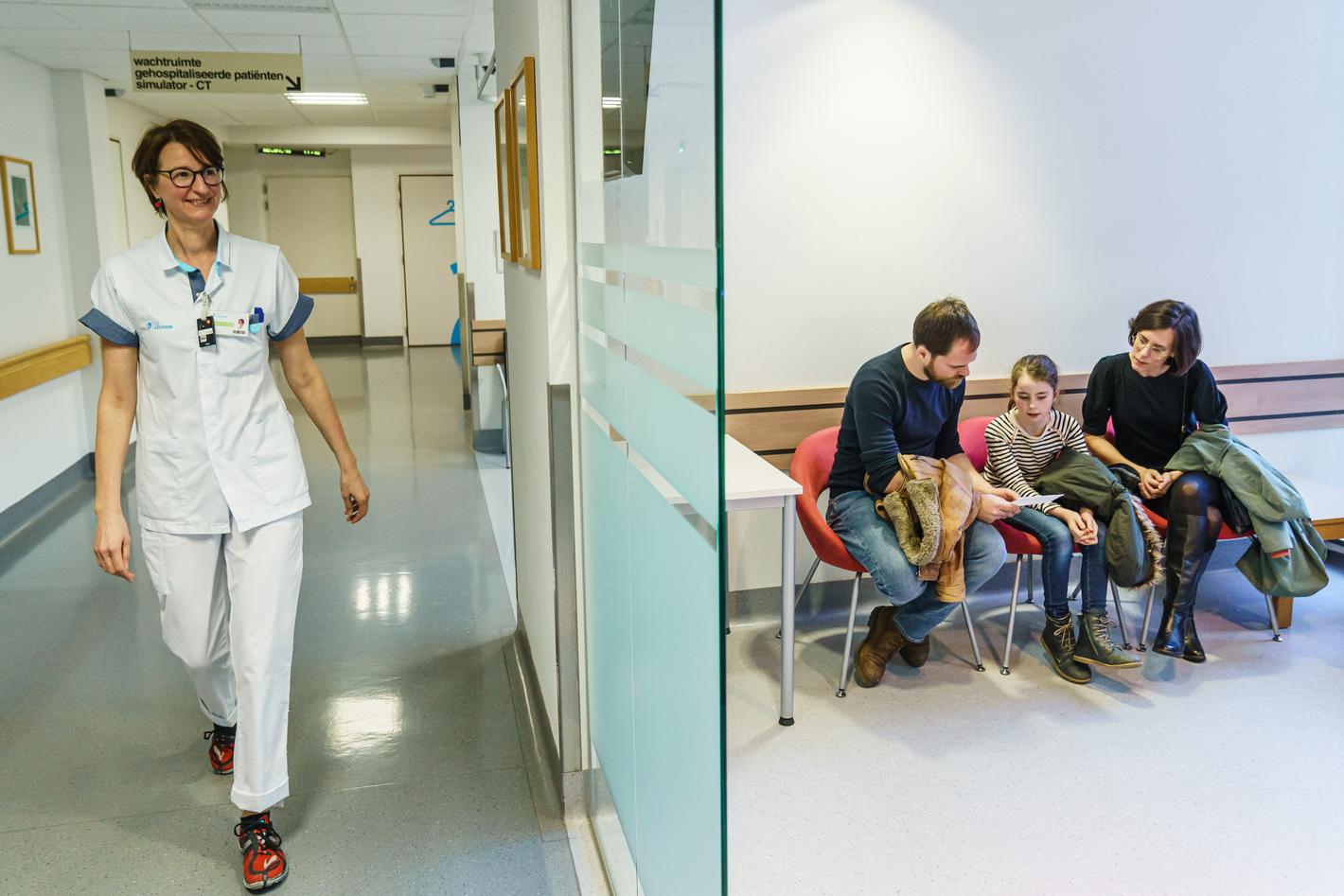
When you come to the radiation-oncology department for your simulation, you will wait in the waiting area of the CT-simulator. The nurse will come and get you there. One of your parents can come along if you like.
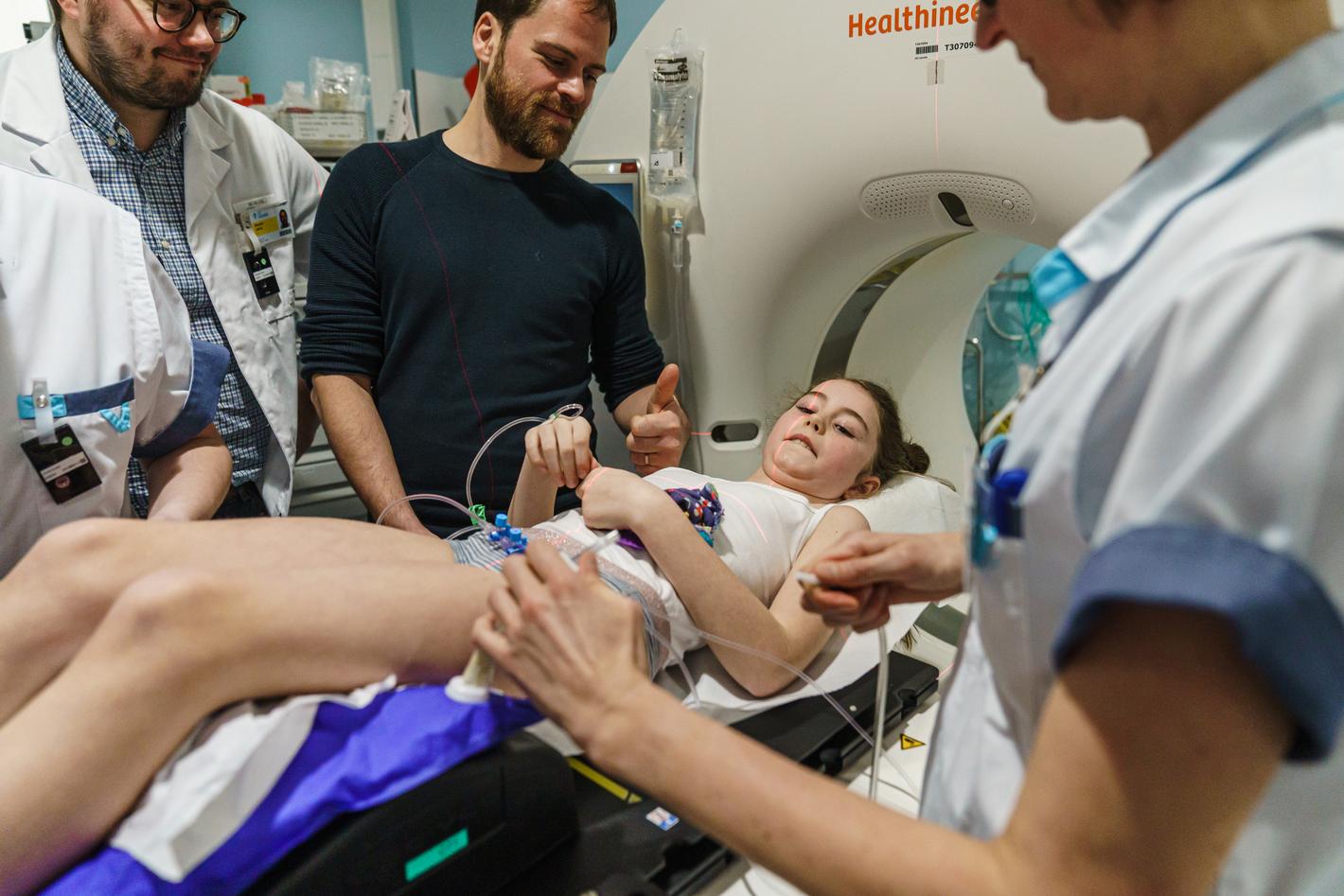
Together with the doctor, we will decide how you have to lie on the simulator. It is important that you can keep perfectly still while the images are taken, as well as later during the treatment.
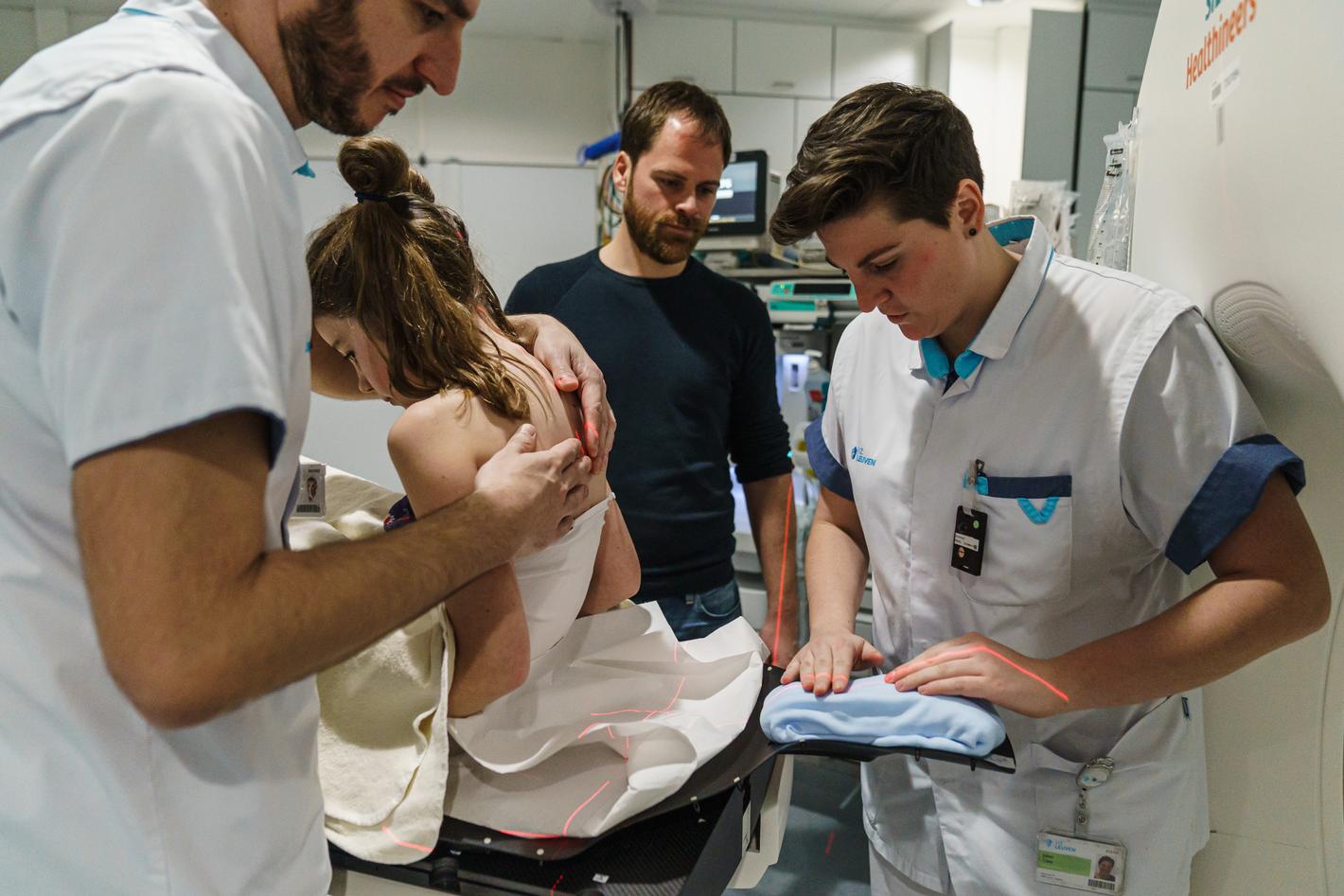
In some cases, a special pillow is made for your neck. The pillow may smell a bit strange.
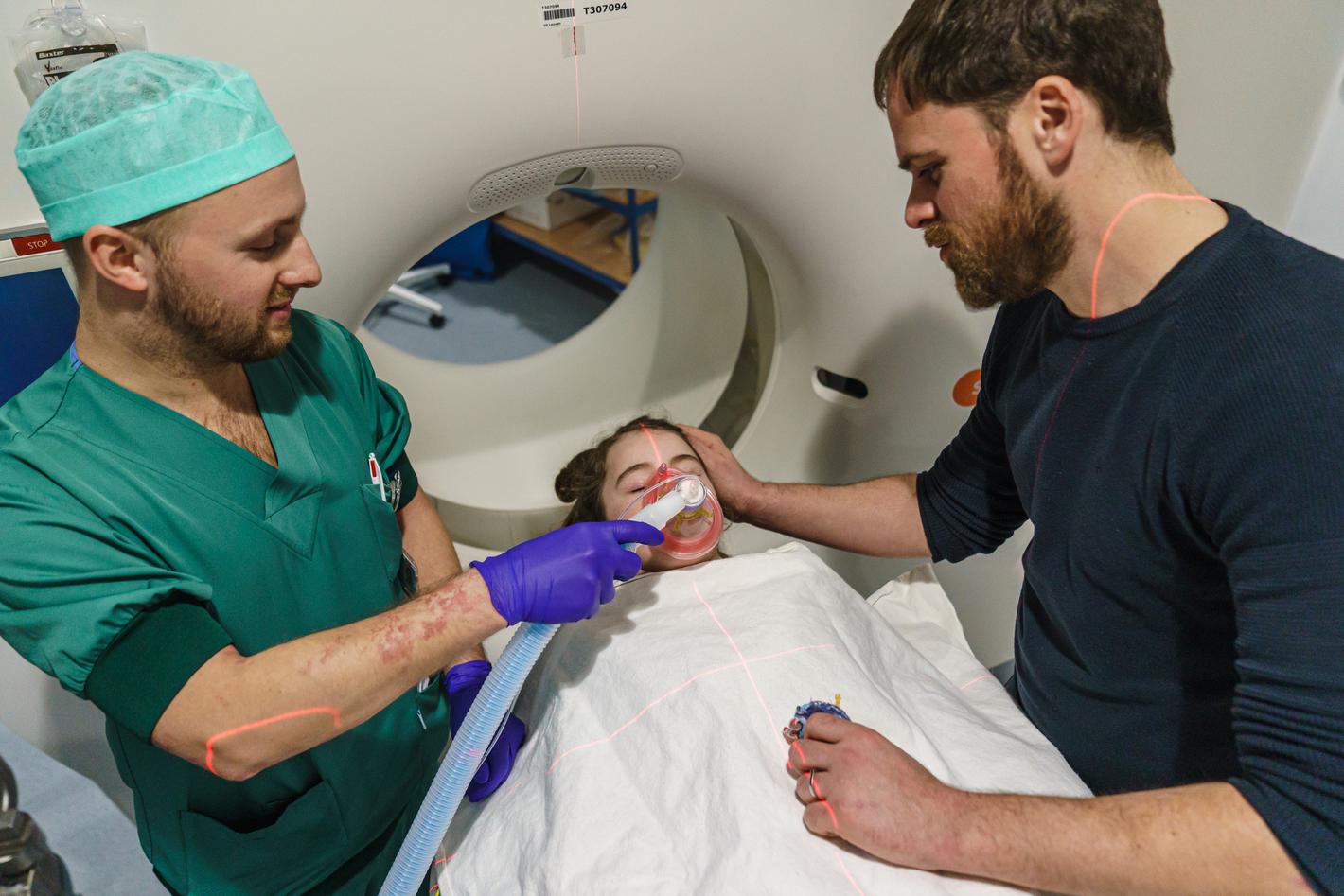
The anaesthesiologist will put you to sleep for a little while. Your mum or dad stays with you until you fall asleep.
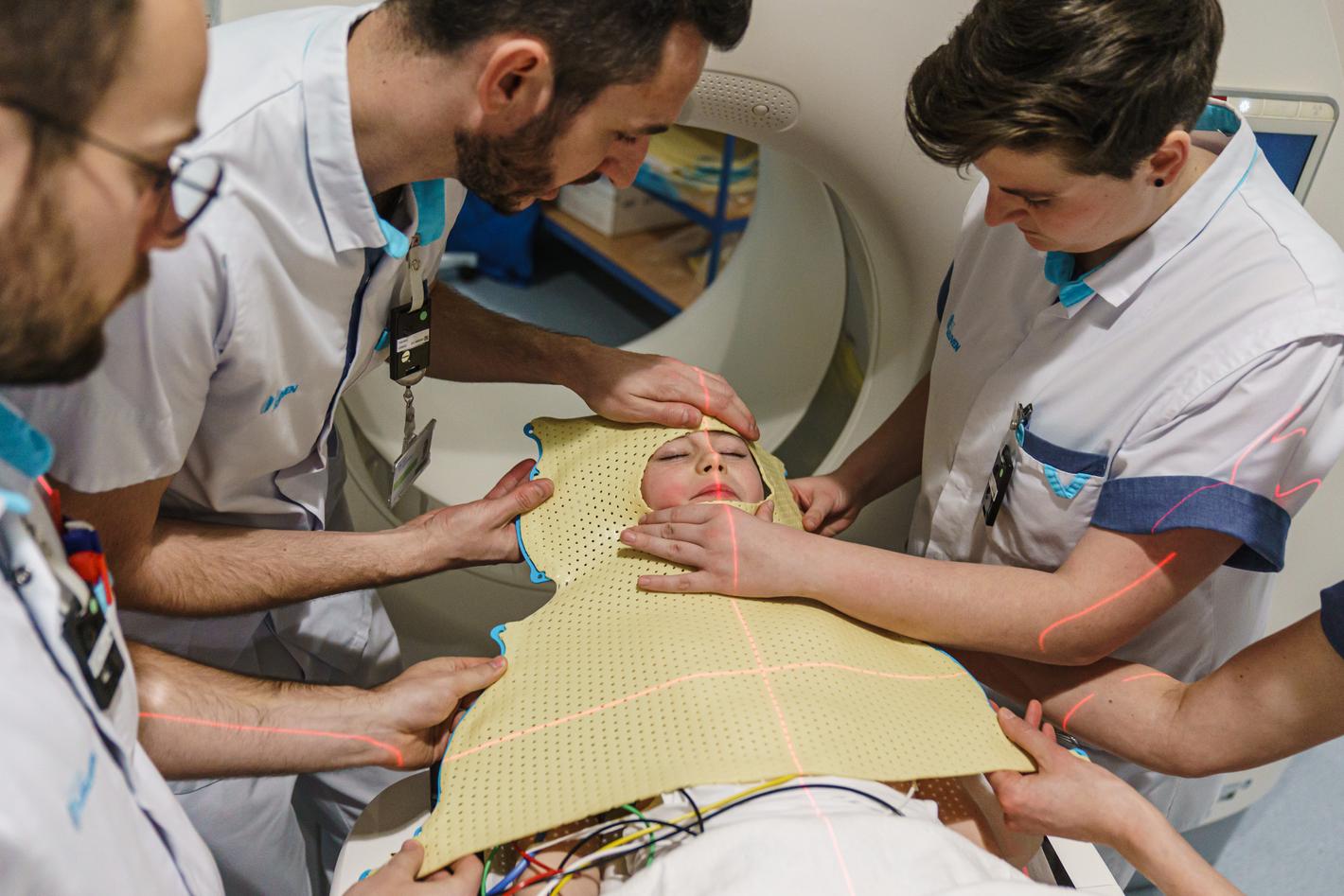
When your head or neck needs to be irradiated, you will also get a mask. Making a mask takes about 20 minutes.
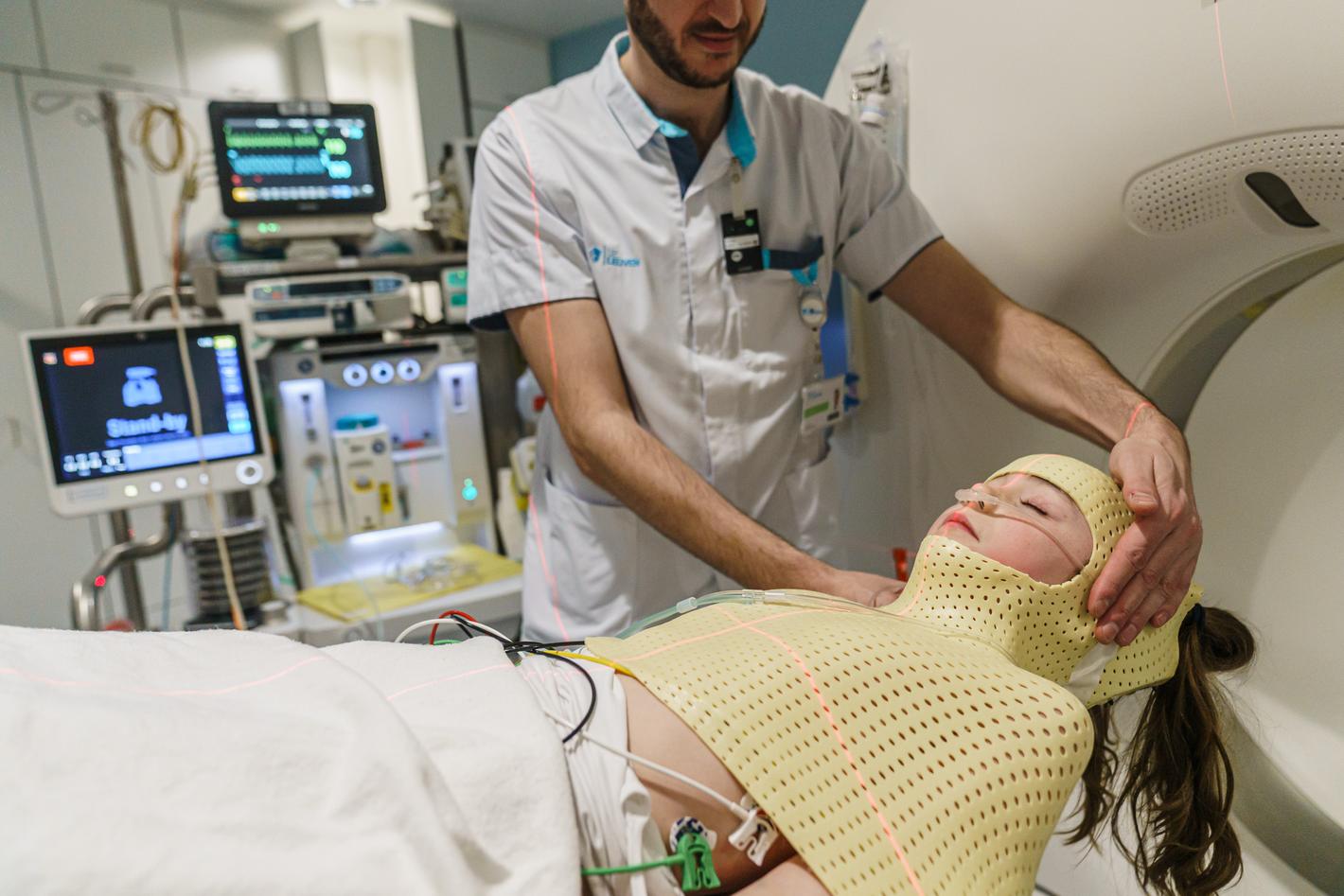
The mask feels warm to the touch. As it cools, it takes the shape of your face or body.
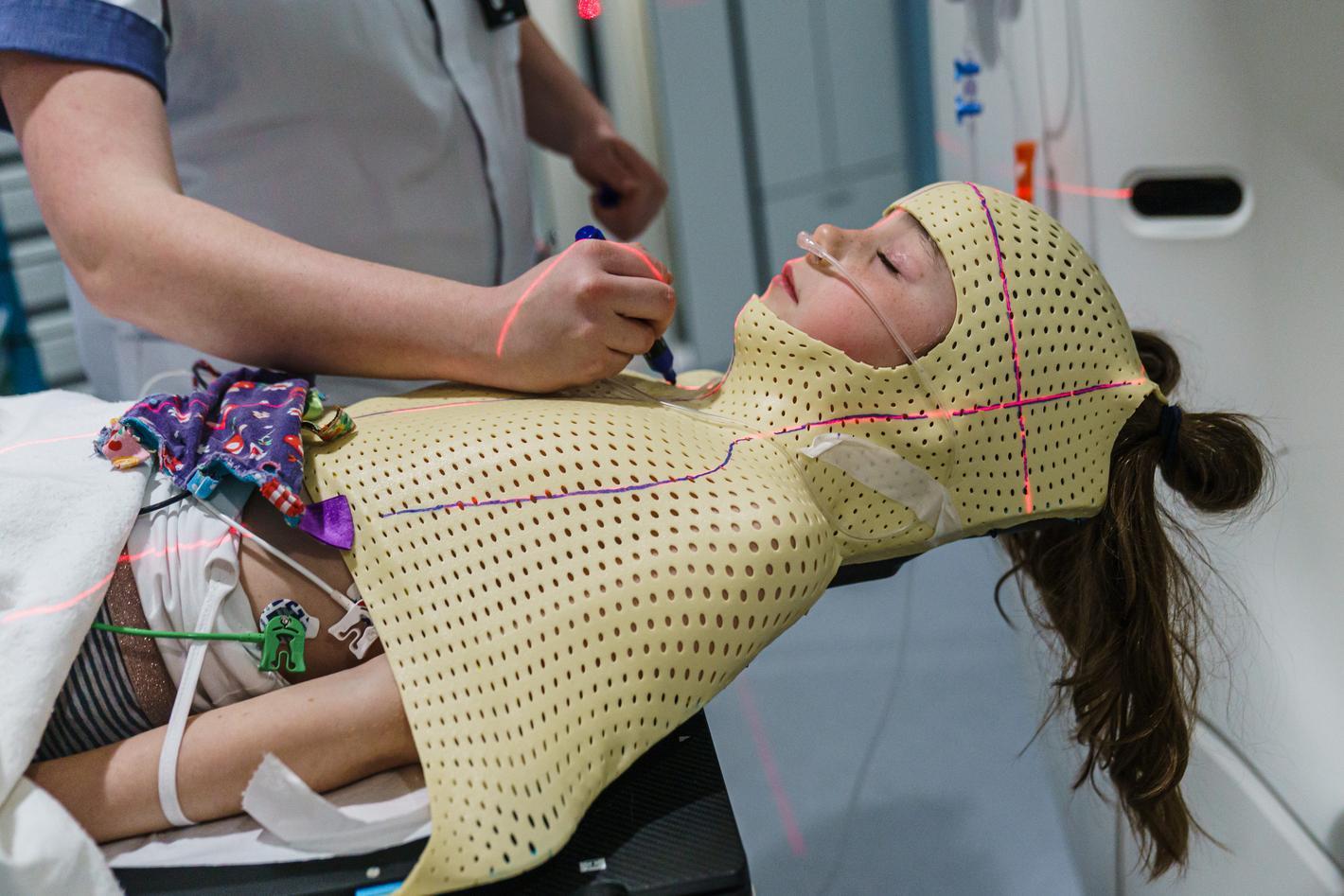
It is important that you lie on the table in exactly the same way during each session. That is why the nurses mark lines or dots on your mask with a felt-tip pen. Don't have to wear a mask? We will put little tattoo points on your skin with special ink. These dots disappear after about a year.
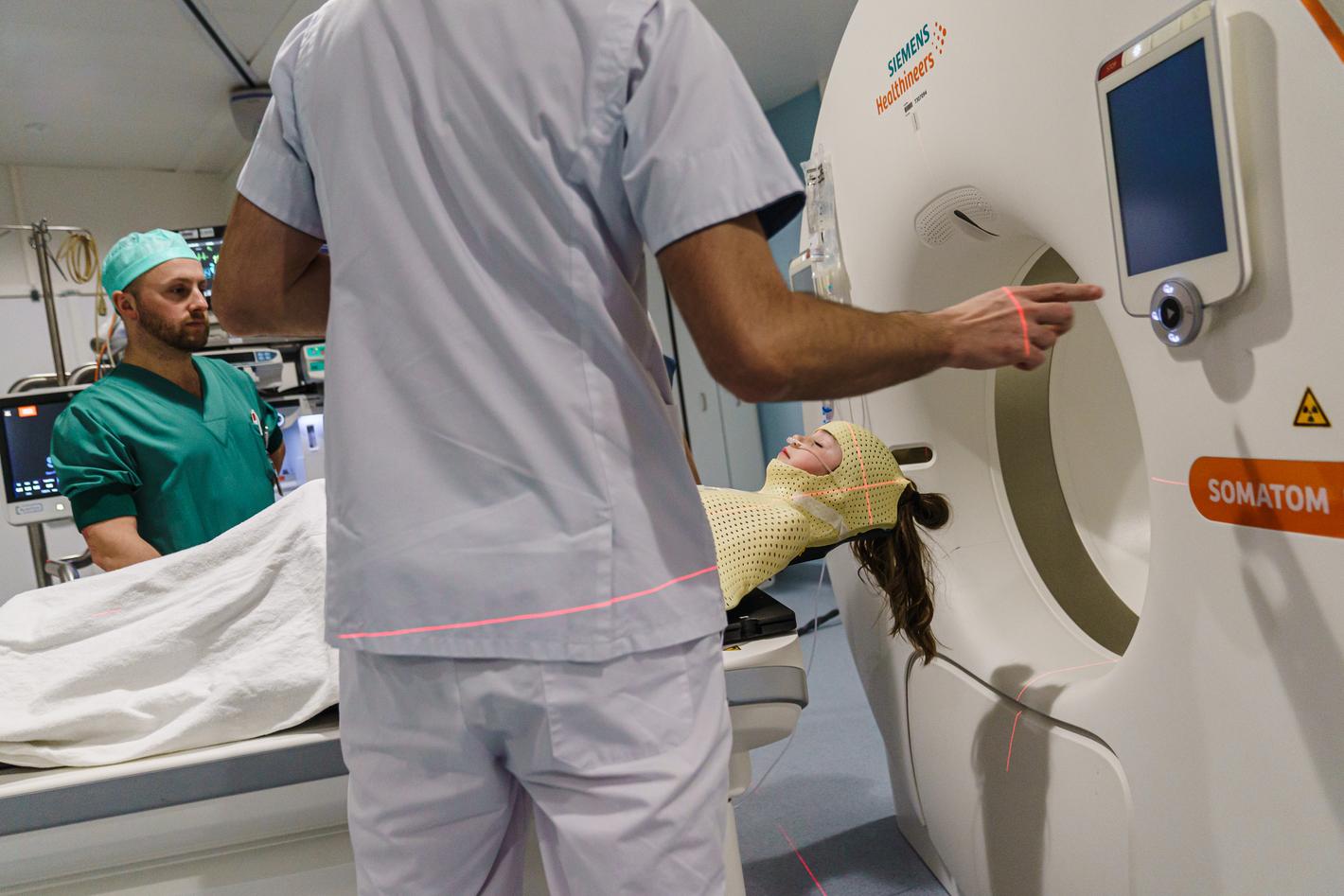
Time for the CT-scan. While you lie perfectly still, images are taken and you move through the machine.
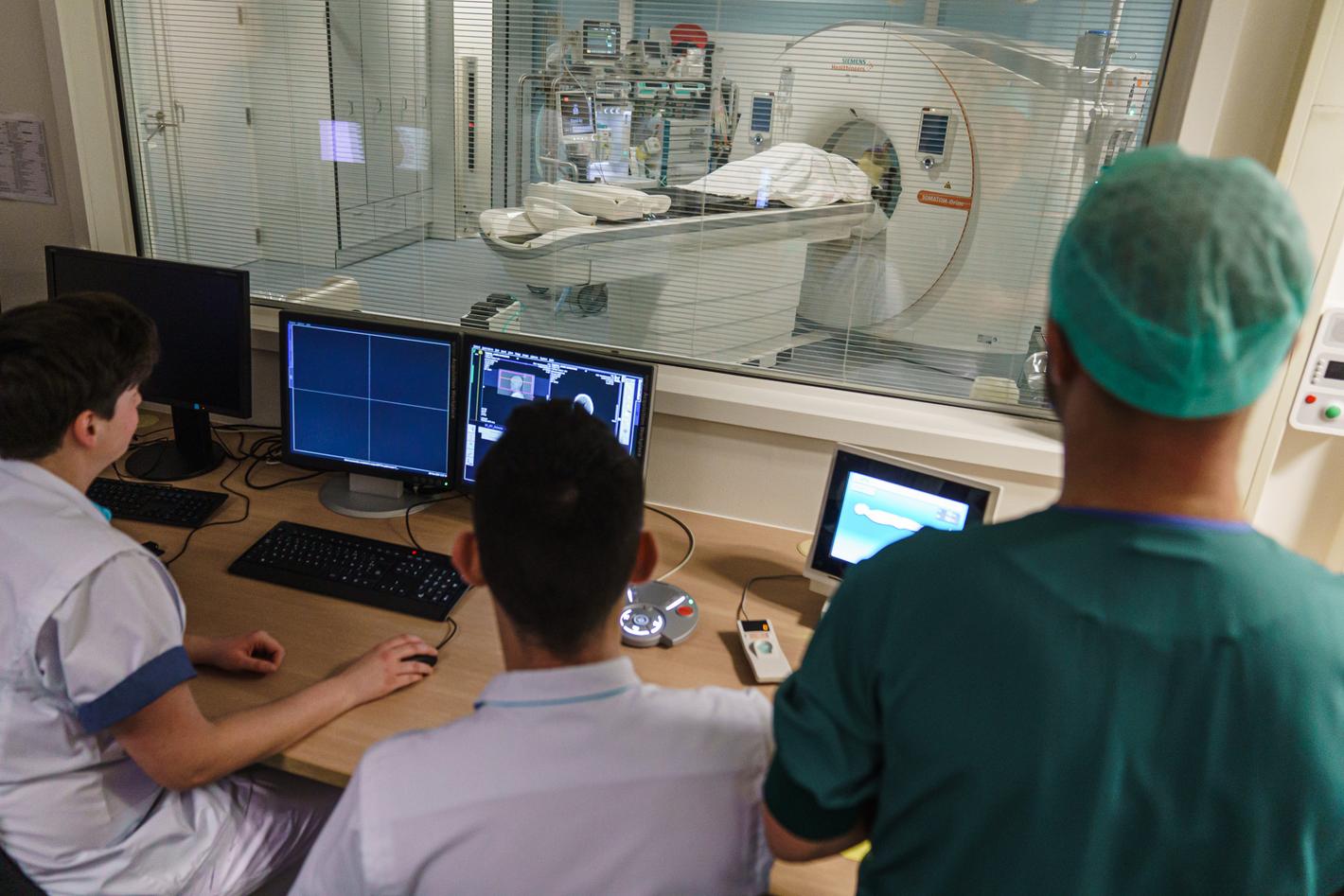
The nurses operate the machine from the room next door.
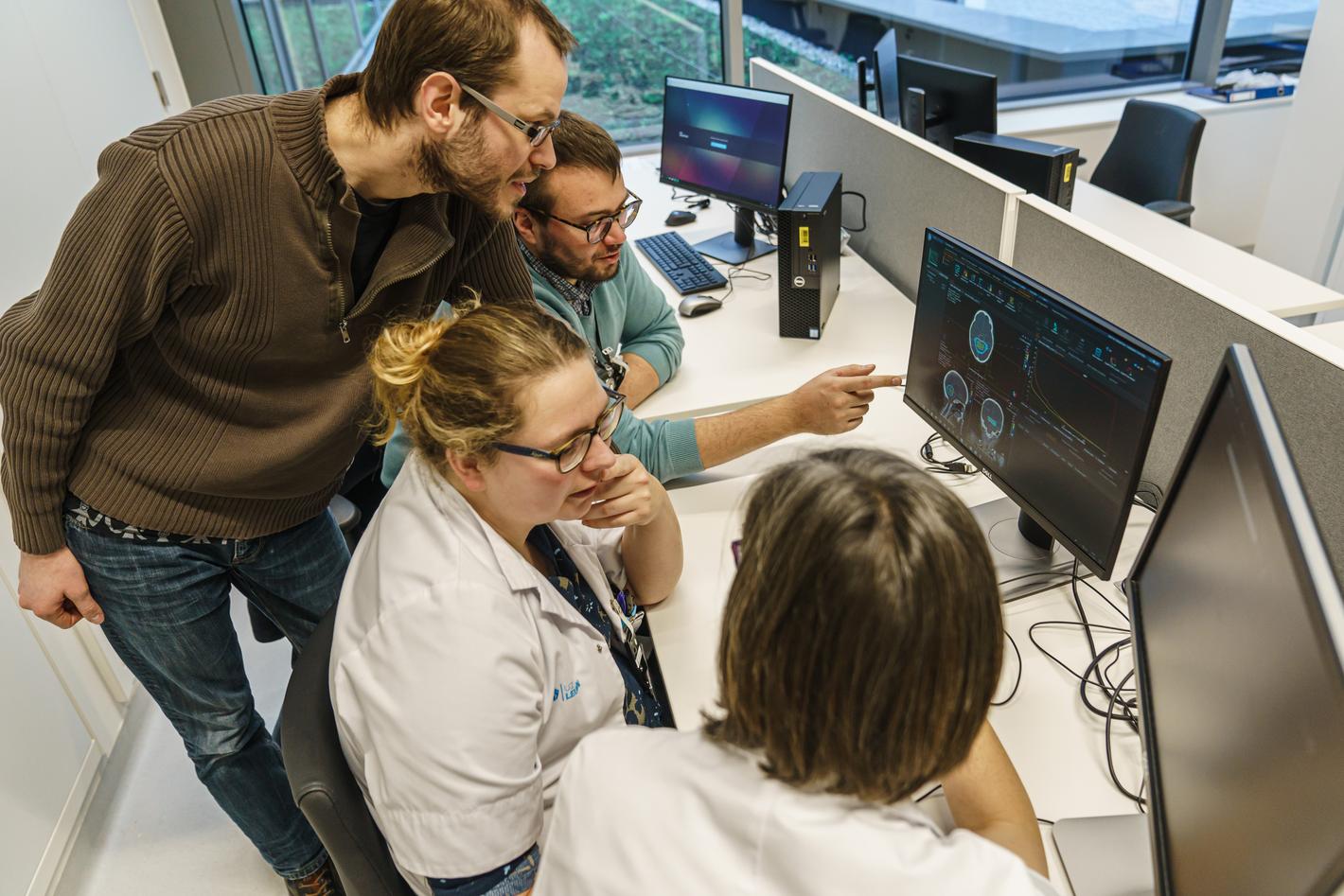
If everything goes well, you can go home once you wake up. We will give you your appointments for the upcoming treatment sessions.
While you are at home, the team looks at the images from the simulation and decides exactly how the radiotherapy will be performed. You’ll get more news about this after two to three weeks.
Treatment
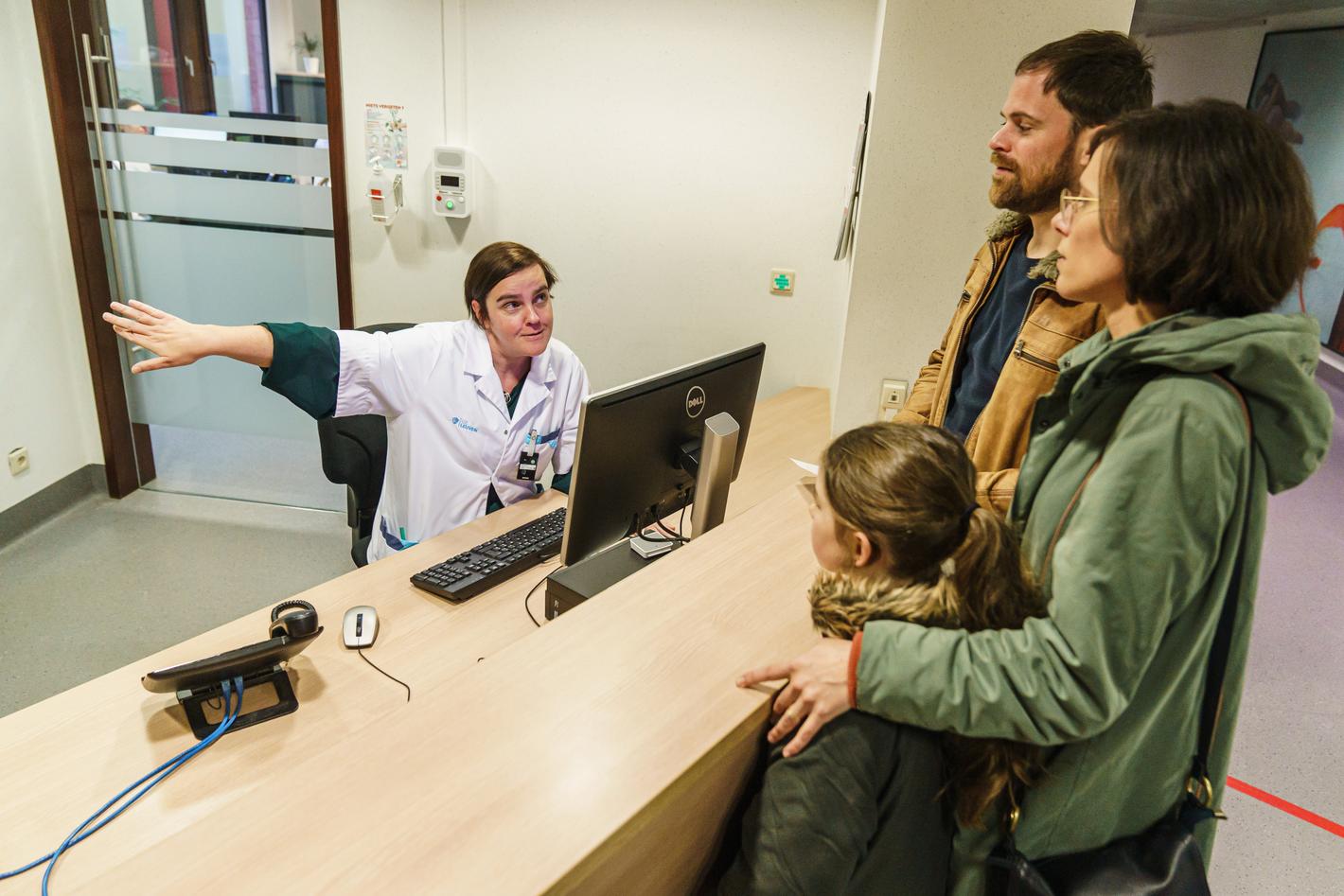
The first time you come in for your treatment, you register at the reception. They will tell you which waiting room you can go to.
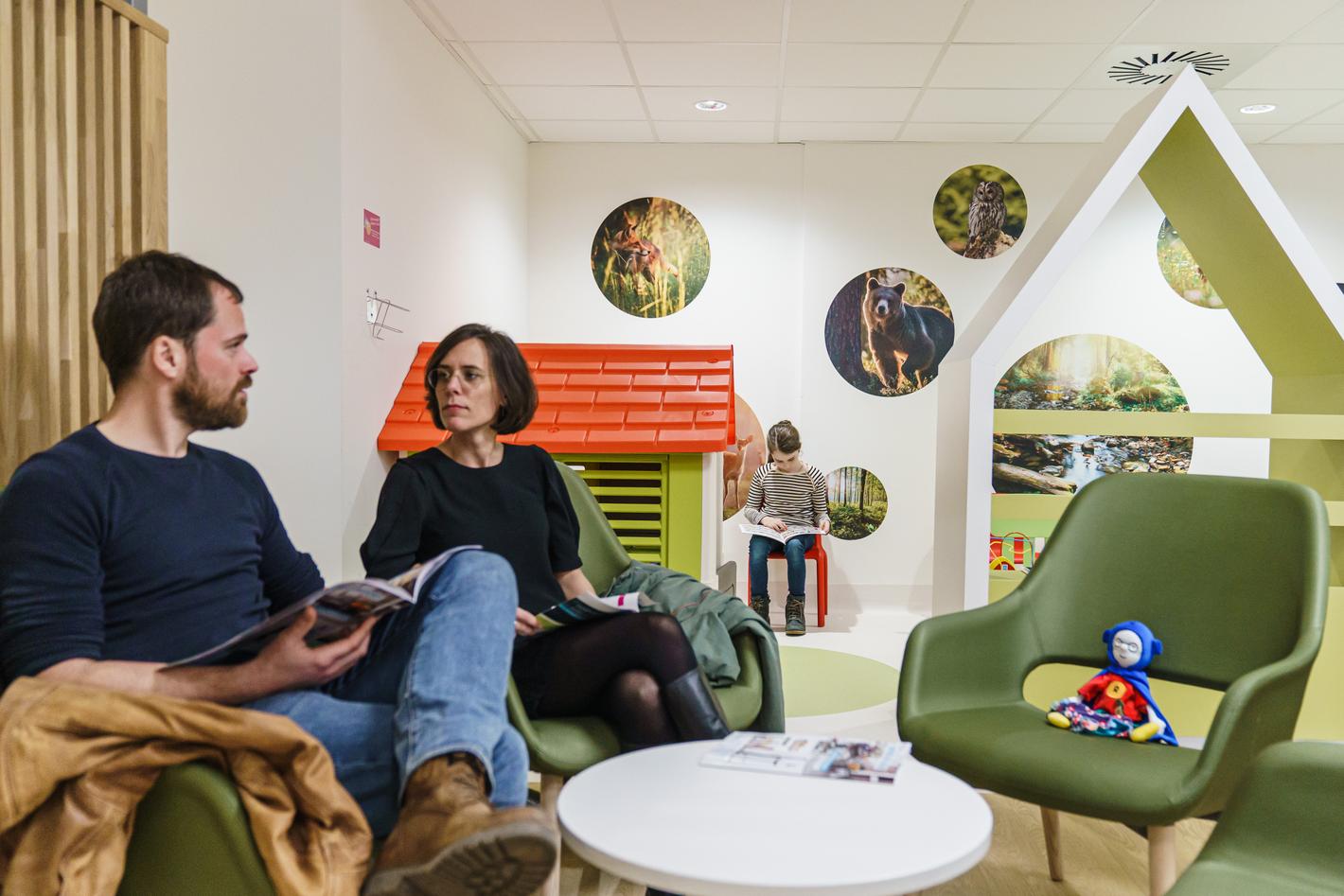
Together with your parents, you can wait in the waiting room until the nurse comes to get you for your therapy session.
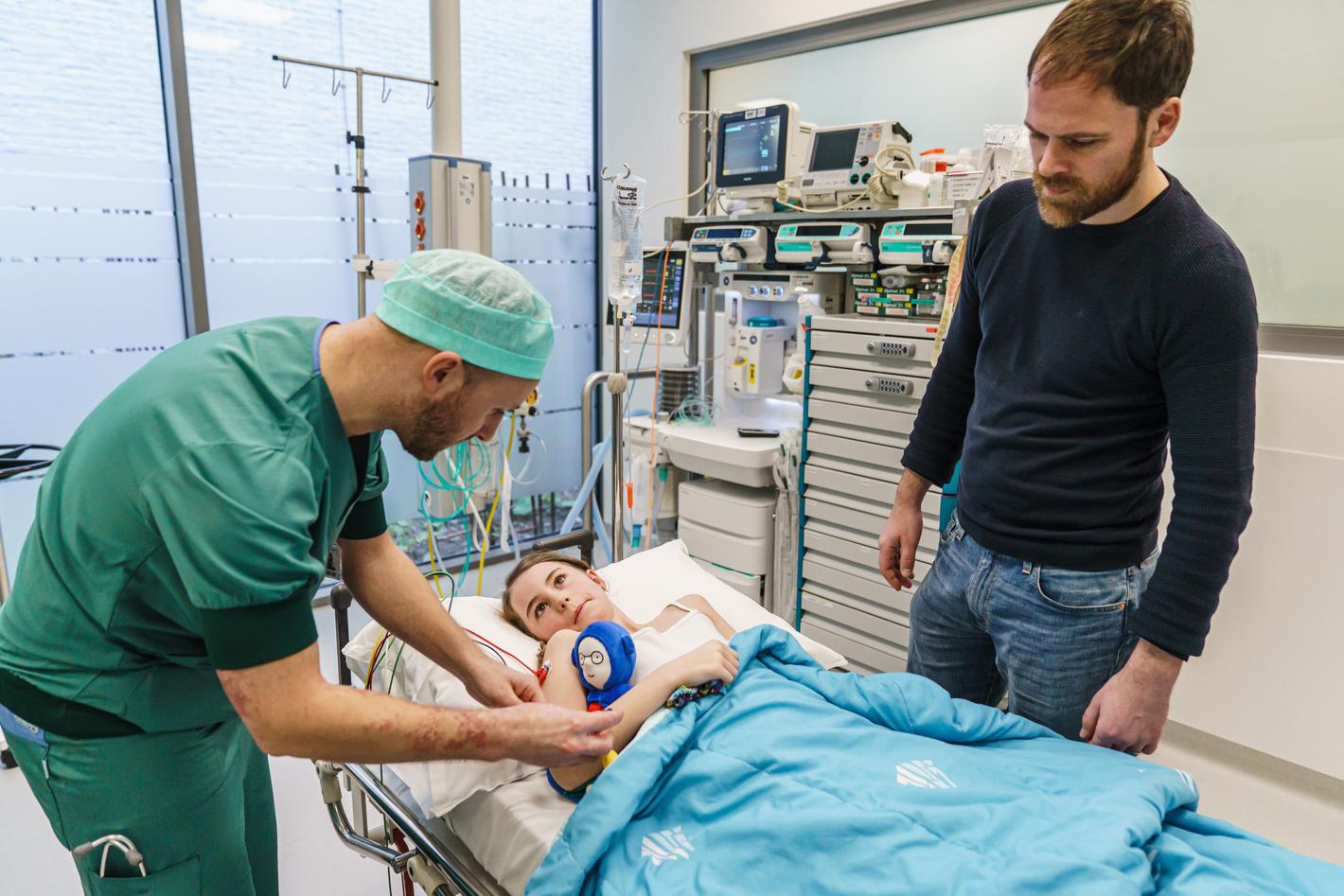
The anaesthesiologist makes sure you are asleep during the treatment.
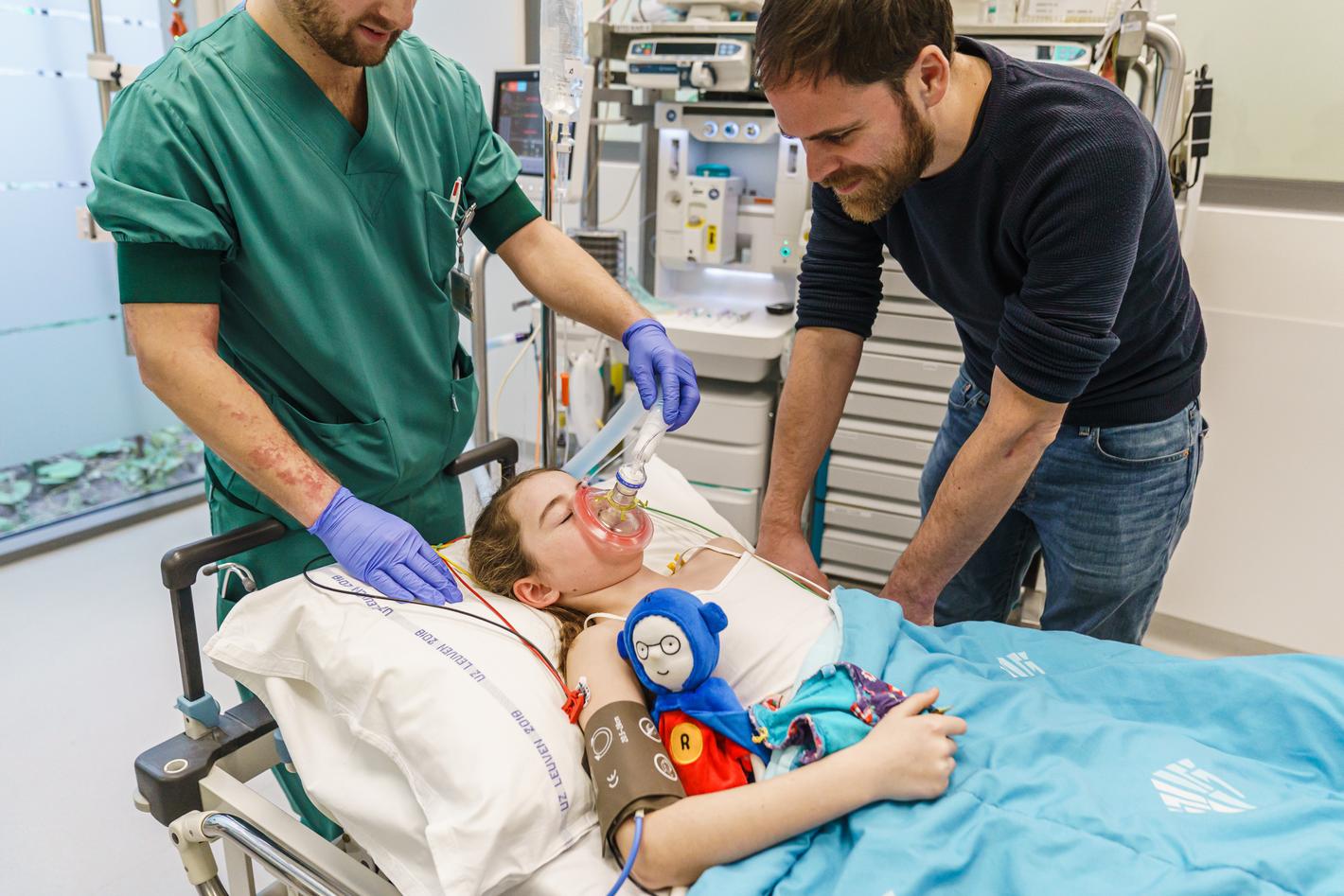
Your parents can stay with you in the anaesthesia induction room until you fall asleep.
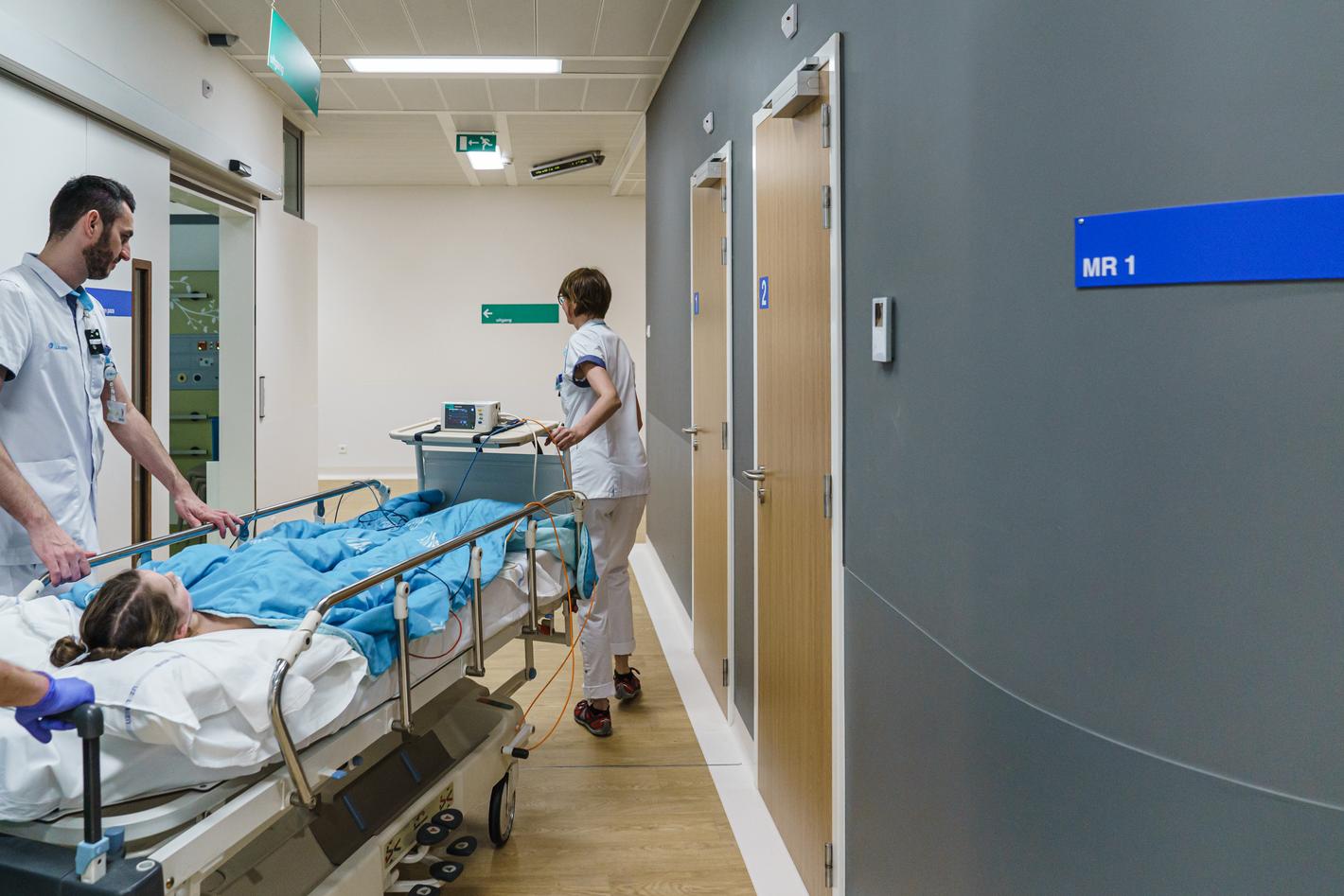
When you’re off to dreamland, the nurses take you to the treatment room where the proton therapy machine is located. Your parents wait in the waiting room during treatment.
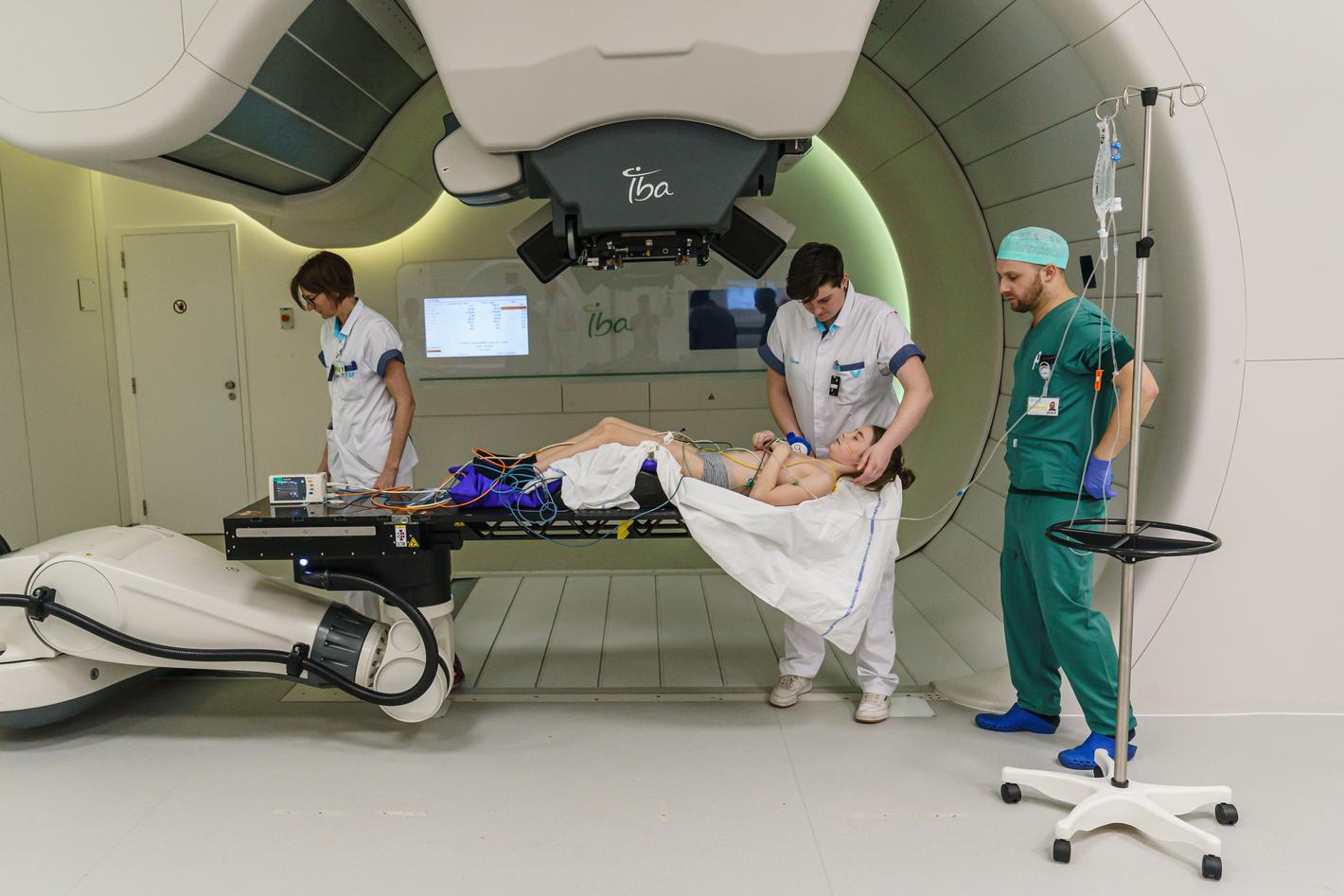
You are put on the table in the same position as during the simulation.
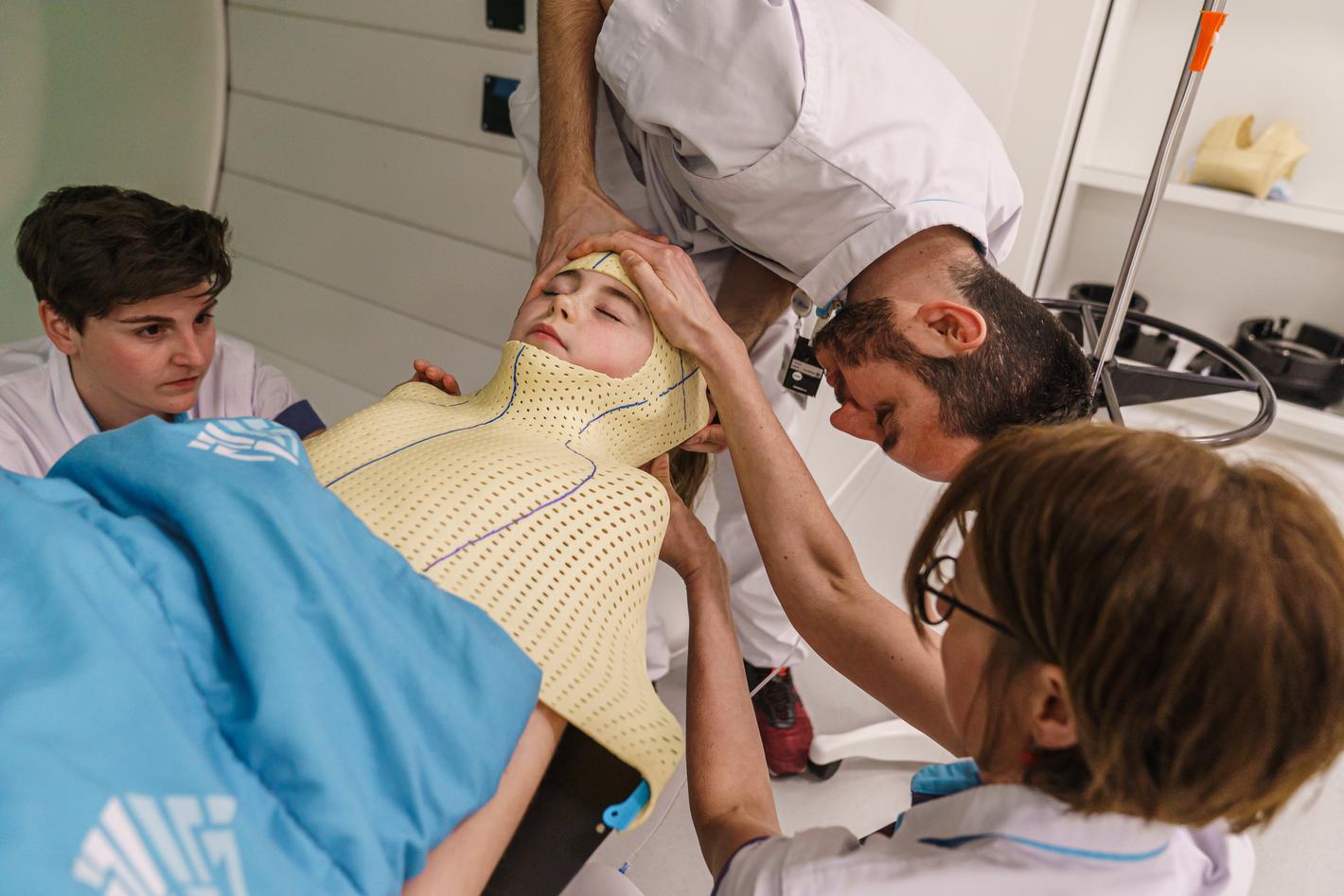
If you have a mask, this will also be put back on.
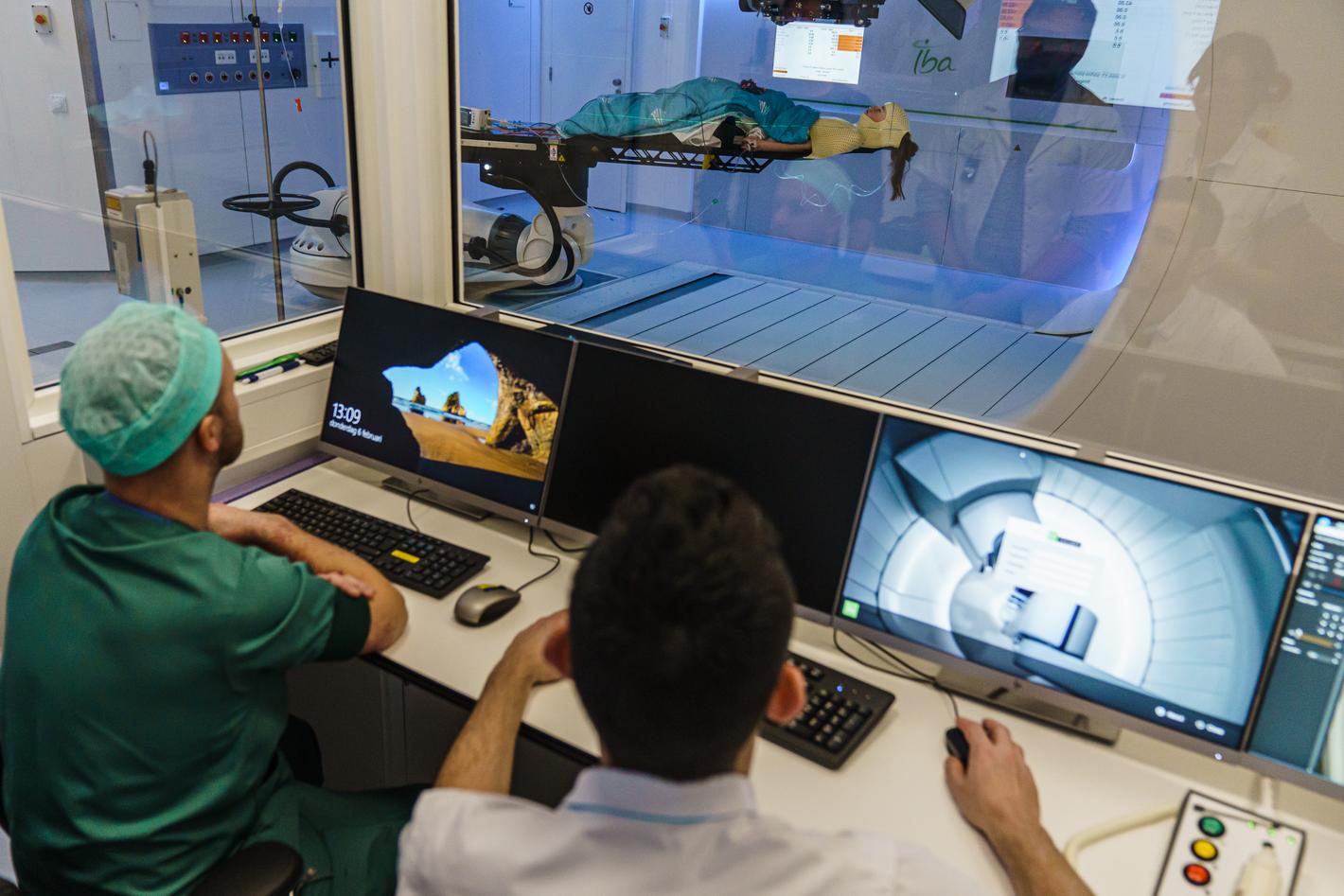
First, the nurse takes some images to make sure you’re in the right position.
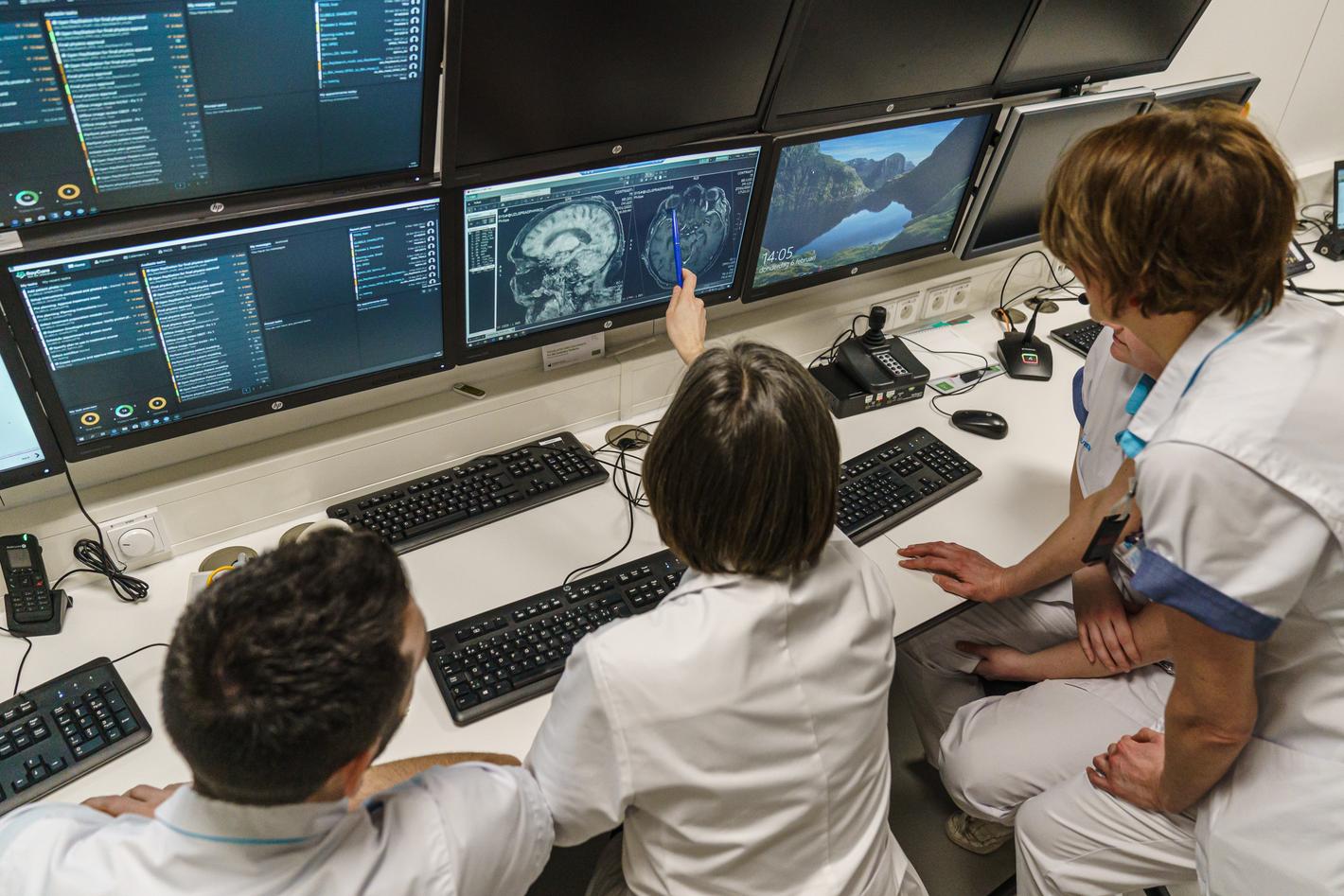
Once everything is ready to start the treatment, the nurse goes outside. He or she can hear and see you at any time from the operating room.
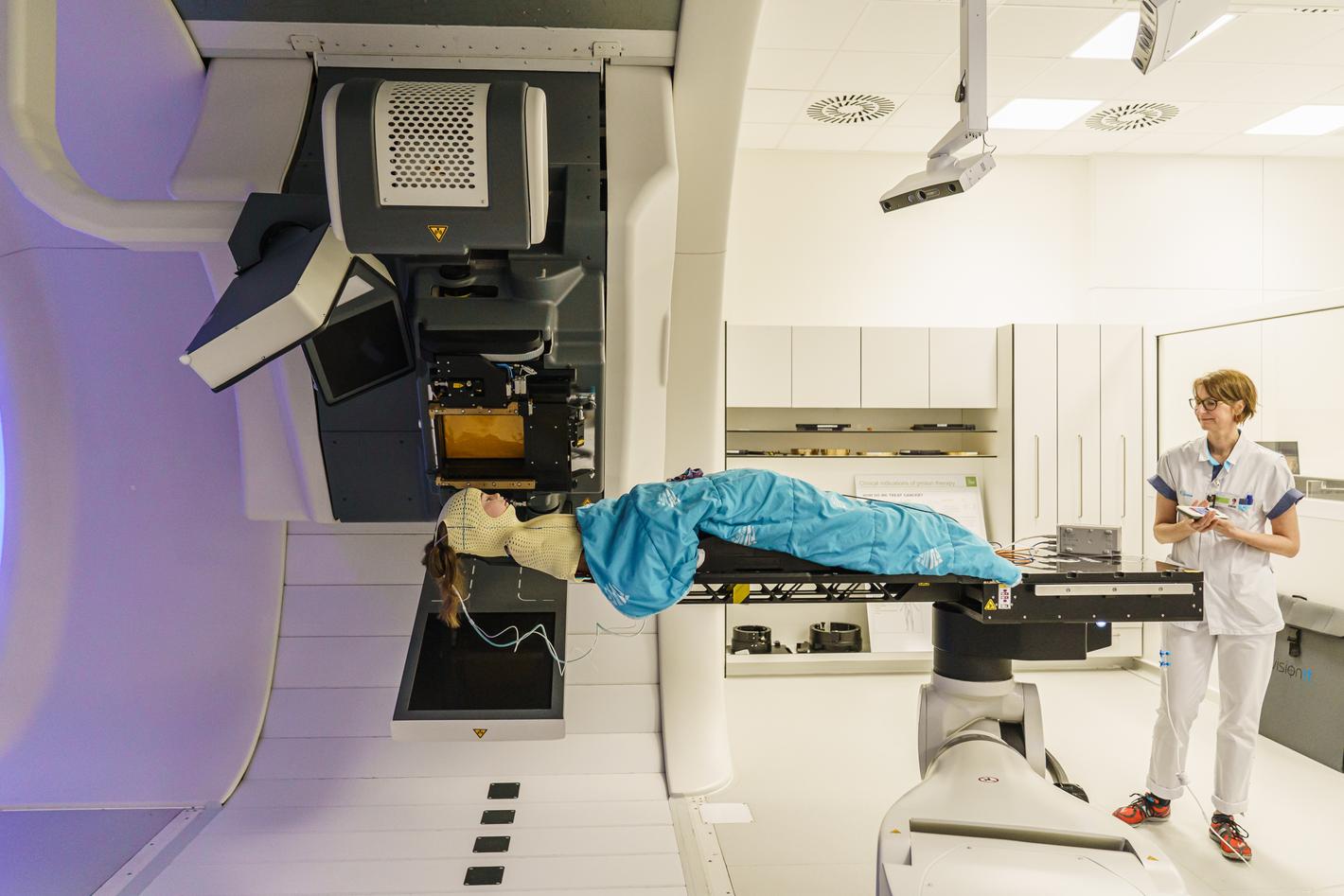
During radiation, the machine rotates and sometimes the table moves.
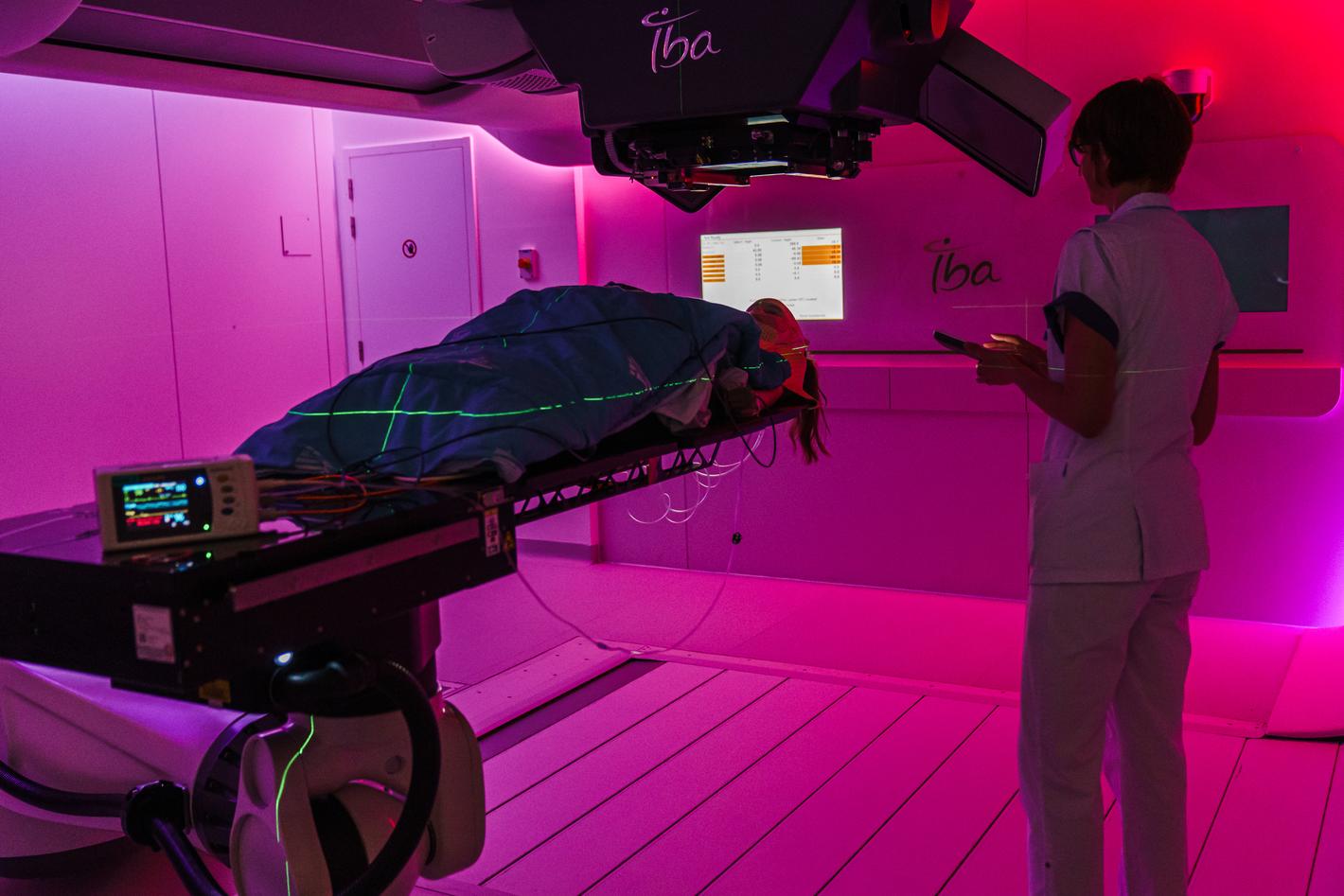
You are radiated while you sleep. You won’t feel a thing.
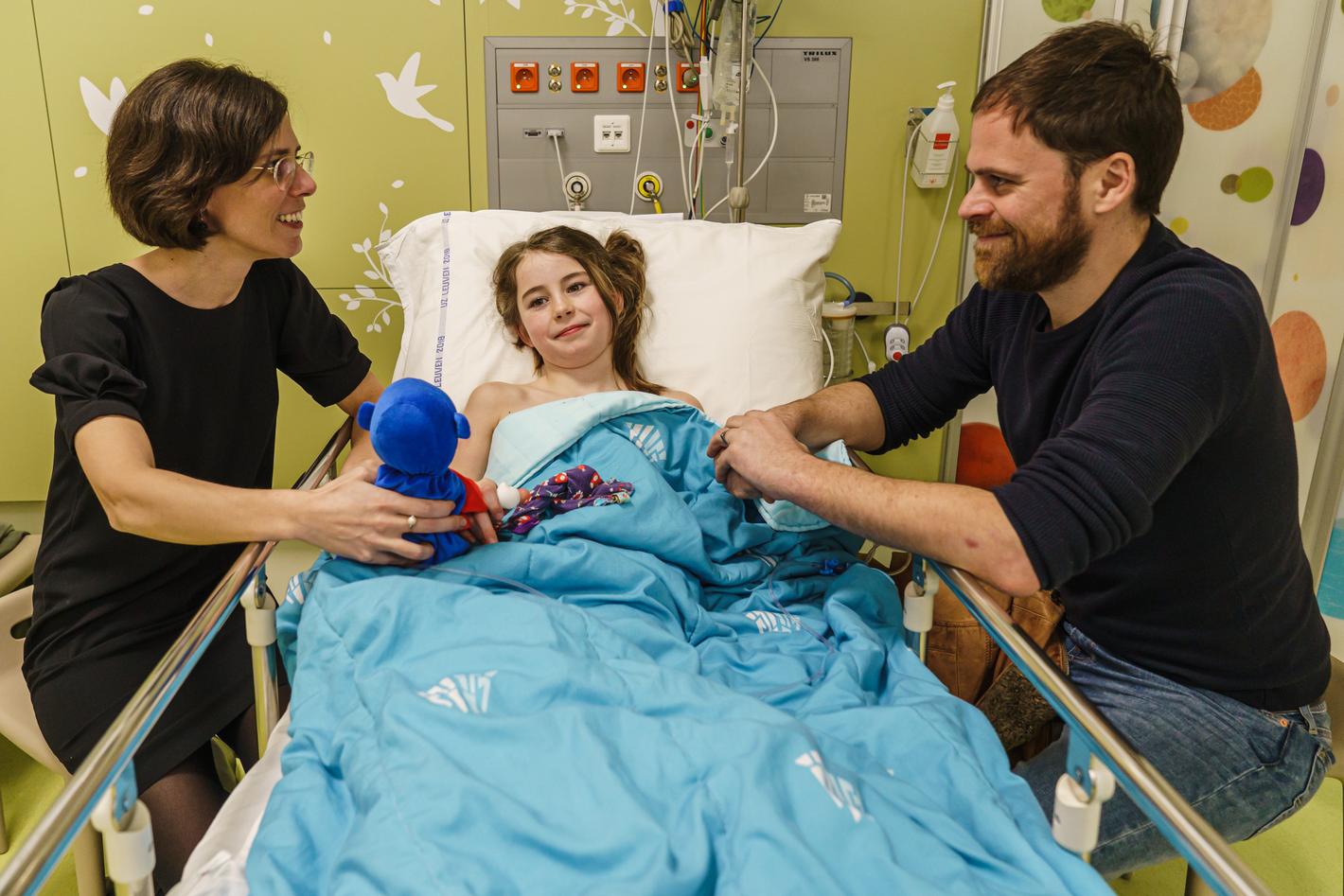
You’ll be in the treatment room for about an hour. After that you will quietly wake up in the recovery room and your parents will be allowed to come see you. After a last check-up you can go home again.